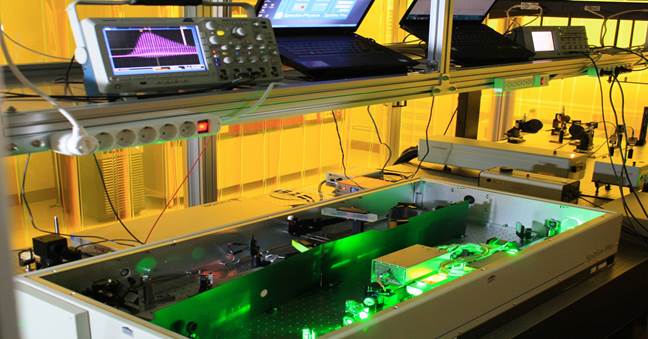아주 강한 빛과 물질이 만나면 어떤 일이 벌어질까? 빛과 물질 간 상호작용에 대한 연구는 과학이 태동할 때부터 끊임없이 연구된 주제이며, 이는 결과적으로 고전 전자기학과 광학의 완성을 낳았다. 하지만 아주 강한 빛과 물질이 만났을 때 어떤 일이 일어나는가에 대한 연구는 상대적으로 역사가 짧고 미미하다. 강한 빛을 내는 광원이 없기 때문이었다.
1980년대 중반에 발표된 Chirped pulse amplification(CPA) 기술의 상용화 이후, 사람들은 고출력 레이저 설비를 이용해 강한 빛과 물질 간 상호작용을 연구할 수 있게 되었다. 특히, 빛이 강해지면 물질을 플라스마 상태로 만들 수 있다는 점에서 레이저와 물질 간 상호작용에 의해 자연스레 발생된 플라스마, 즉, 레이저-플라스마(laser-plasma)에 대한 연구가 많은 관심을 끌었다. 광주과학기술원 레이저-플라스마 가속 연구실에서는 이러한 레이저-플라스마 현상 연구와 응용가능성 탐구에 주력한다. 상기한 레이저-플라스마에 대한 다양한 연구 주제 중에서 우리 연구실은 다음과 같은 주제를 연구하는 데 특히 초점을 맞추고 있다:
What will happen when an intense light meets a matter? Interaction between light-matter has been constantly studied from the very beginning of science, and as a result, classical electrodynamics and optics could be firmly founded. Research in the interaction between intense light and matter, however, has a rather short history and is not established as much as other classical fields in physics, simply because there was no tool such as a high-power laser system.
Thanks to the invention of chirped pulse amplification(CPA) technique in mid-80s, high-power laser system is now widespread around the world, and the interaction between an intense laser pulse and a matter actively studied. Since such intense laser pulse can easily ionize a matter and eventually induce plasma, investigation of the laser-induced plasma and its application carried out in many research groups including GIST Laser-plasma Acceleration Laboratory(LPAL). Here in GIST LPAL, our research is mostly focused on the following themes:



